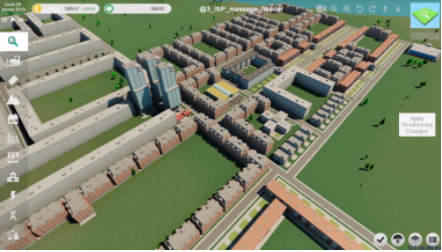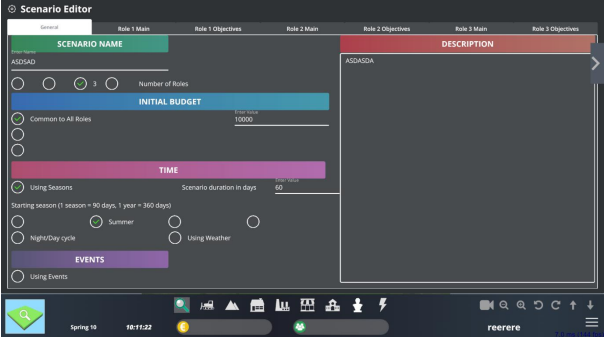
The HERA game challenges students to solve realistic, non-trivial problems inspired by real-life. It livens up the classroom, promotes learner engagement, enriches interaction, and encourages experimentation.
See a tutorial video for the game
The HERA game is organized around two pillars:
- A base functionality
- A set of educational scenarios
The key characteristics of the game are:
- It is multiplayer
- It is role-based
- It provides a scenario editor through which learning activities can be easily structured
- It provides rich options for designing learning activities, such as:

Terrain formatting, through which students and educators may change the layout of a map by adding elevations such a hills and mountains, valleys, water bodies such as lakes, vegetation, and more.
Weather conditions, including rain, snow, and other elements.
Time, with alterations between day and night through which the town changes, shadows are cast, city lights are lit, and more.
A rich collection of buildings that support students and educators in designing a town with characteristics that support diverse educational scenarios. These include:
- Residential buildings, including large and small apartment complexes, houses, houses with garages, and more
- Commercial buildings, such as shopping malls, fresh markets, barber shops, coffee shops, general shops, office buildings, and more
- Service buildings, such as police stations, fire stations, schools, hospitals, airports, and more
A rich collection of city infrastructures such as:

- Energy productions infrastructures, such as coal powerplants, nuclear powerplants, solar powerplants, wind powerplants, transformers, and power cables
- Communications structures, such as internet service providers, antennas, fiber cables, DLS cables, and more
- Cultural and athletic infrastructures, such as stadiums and museums
A rich collection of utility vehicles, such as police vehicles, ambulances, buses, firefighting, trucks, and more.
Other structures, such as parking lots.
City decorations, such as festive lights, fireworks, and Christmas markets.
